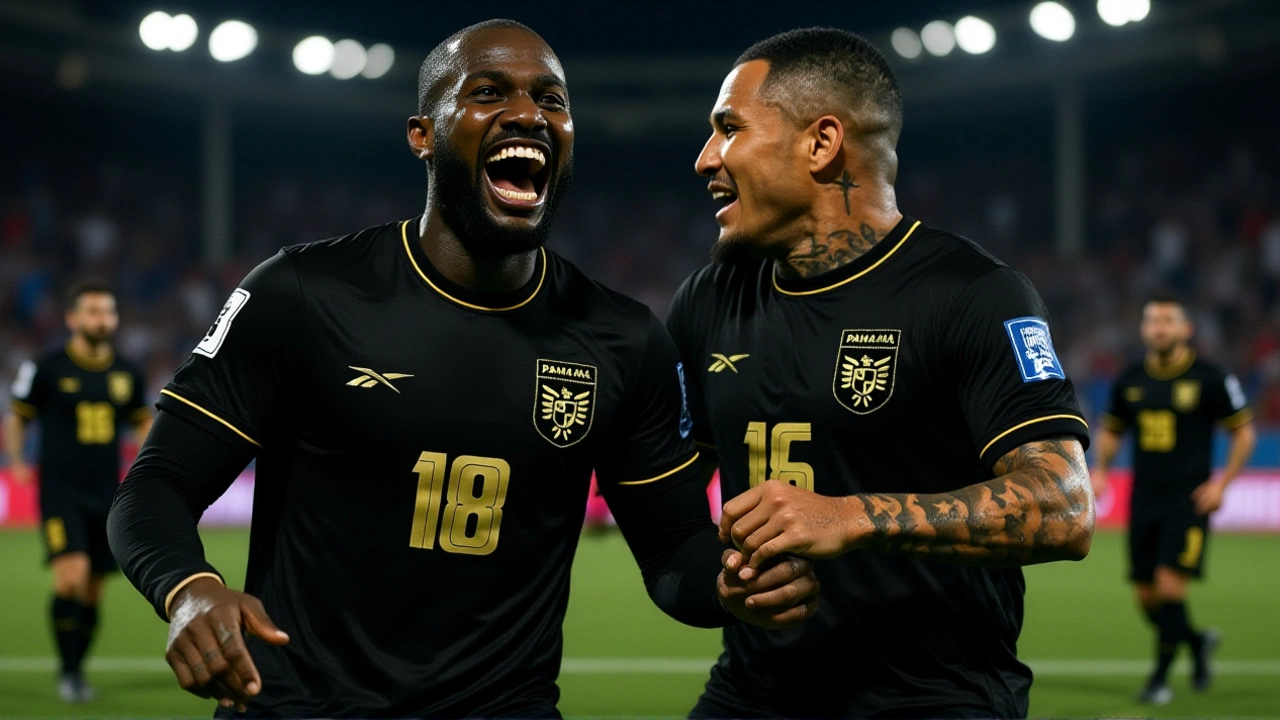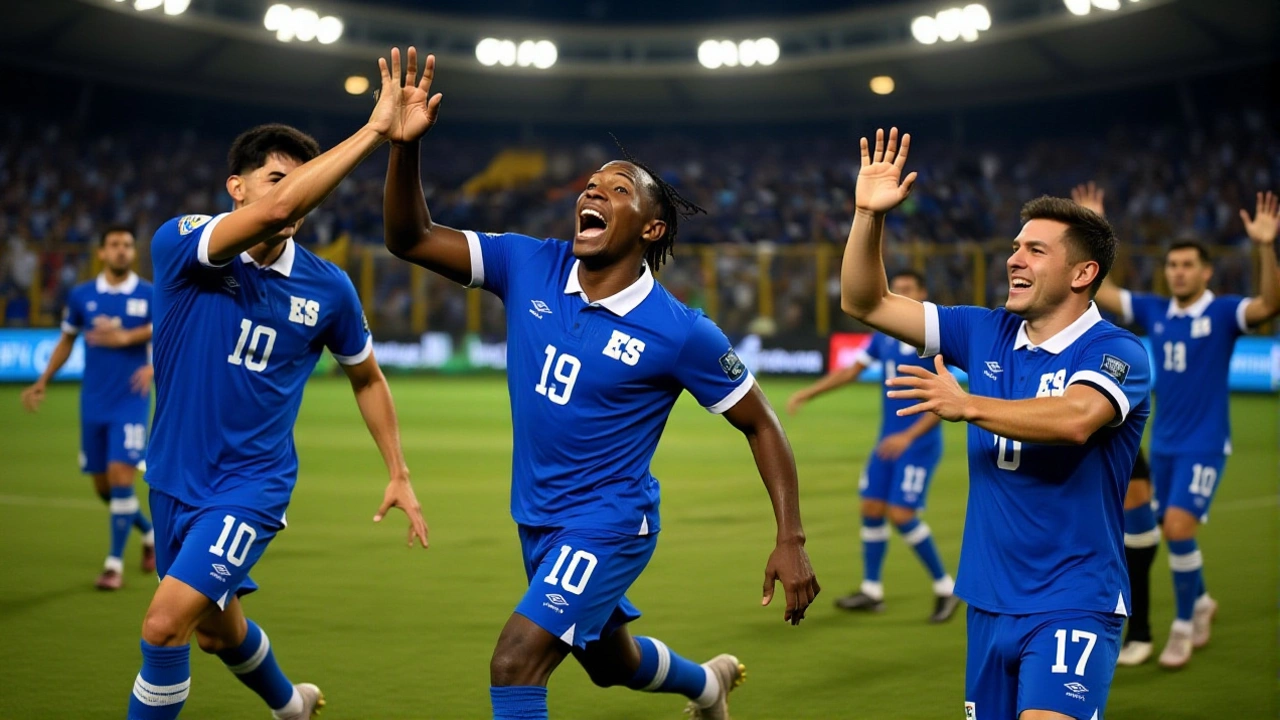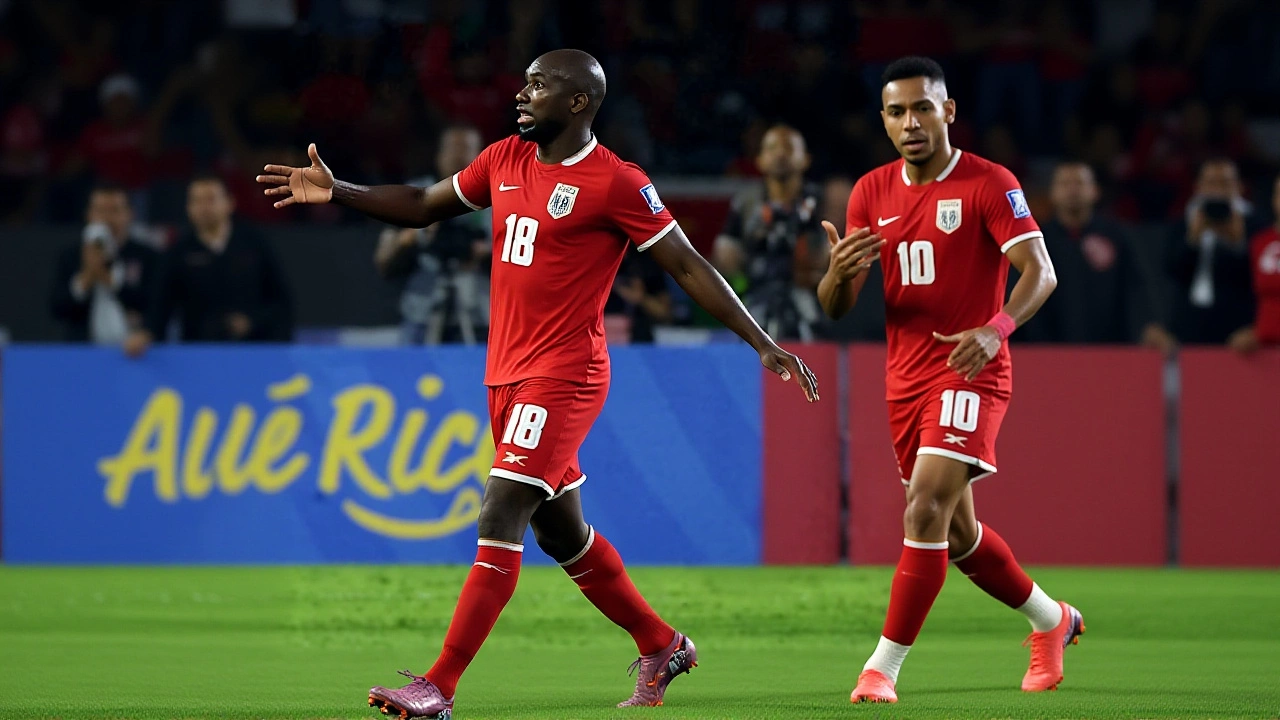On a humid November night in Panama City, the roar of 30,000 fans didn’t just celebrate a win—it announced a comeback. Panama’s 3-0 victory over El Salvador on Estadio Rommel Fernández didn’t just secure a spot in the 2026 FIFA World Cup; it rewrote the script for a team that had spent years climbing out of the shadows. The final whistle, blown at 1:00 a.m. local time, sent fireworks spiraling into the sky above the stadium. For the second time in history, Panama is headed to the World Cup. And this time, they’re doing it back-to-back.
A Match Built on Precision, Not Luck
It wasn’t a fluke. Panama needed exactly three goals. No more, no less. With Suriname and Guatemala both lurking in the standings, every point, every goal mattered. The pressure was suffocating. But from the opening kick, Panama played like a team that had rehearsed this moment a thousand times. César Blackman opened the scoring in the 17th minute, pouncing on a loose ball after a corner kick deflected off the crossbar. The goal wasn’t pretty—it was instinct. Then came the moment that turned nerves into euphoria. In the 45th minute plus four, with the clock bleeding away, referee Jorge Larrionda pointed to the spot after a handball in the box. Éric Davis, cool as ice, buried the penalty. The stadium fell silent for a split second—then exploded. "It could have been more," said CBS Sports analyst during the broadcast. "Panama was all over them. That header off the line? That was the difference between a 4-0 and a 3-0. But they got what they needed. That’s football."The Substitute Who Became a Legend
The final goal came not from a starter, but from the bench. José Luis Rodríguez, who’d come on in the 70th minute, didn’t even start the match. But in the 85th minute, after a clever through ball from Keto and a saved shot that rebounded into his path, he slammed it home. The camera caught him sprinting toward the corner flag, arms wide, screaming at the sky. Fans poured onto the pitch before the referee could blow again. "Rodriguez puts an exclamation mark on this," the commentator said. "Panama knew what they had to do tonight. And they did it." The final whistle didn’t just end the match—it ended years of near-misses. In 2018, Panama’s debut at the World Cup ended in three heavy losses. They were outclassed, outgunned, forgotten. But this time? This time, they didn’t just show up. They owned it.The Numbers Behind the Miracle
The final Group A standings told the story: Panama finished with 12 points—three wins, three draws, zero losses. A +5 goal difference. A perfect record against the bottom half of the group. Meanwhile, El Salvador limped to fourth place with just three points, a -9 goal difference, and a 1-5 record. Their fate was sealed not just by Panama’s win, but by Suriname’s 4-0 thrashing of them just five days earlier. The qualification path was brutal. Panama had to beat Guatemala 3-2 on the road just five days before this match. They drew with Canada. They held Mexico to a 0-0 stalemate in Mexico City. And on October 10, they scraped a 1-0 win over El Salvador in San Salvador—a result that felt like a lifeline at the time. Betting odds had been lopsided: Panama at -680, meaning you’d need to risk $680 to win $100. El Salvador at +1680. The over/under on goals? 2.5, with the "over" heavily favored. The bookmakers didn’t just predict a win—they predicted a rout. And they were right.
A Central American First
This isn’t just about Panama. It’s about Central America. The region has long been dominated by the United States in World Cup qualifying. But now, for the first time since the 1980s, another Central American nation has qualified for consecutive tournaments. Panama joins the U.S. as the only two in the region to do so. And they did it without a single star player from Europe’s top leagues. No Luis Suárez. No Christian Pulisic. Just grit, discipline, and a squad that knew how to win under pressure. "They didn’t have the money, the clubs, the exposure," said former Panamanian captain Román Torres in a post-match interview. "But they had each other. That’s what you need when the world isn’t watching."What’s Next for Panama?
The 2026 World Cup will be hosted across the United States, Canada, and Mexico—a tournament that could be the most watched in history. Panama’s group stage opponents aren’t yet known, but they’ll face one of the top seeds: likely Brazil, Spain, or Germany. Their preparation begins immediately. The federation has already announced a January training camp in Spain, with friendlies against Portugal and Uruguay on the horizon. For now, though, the country is still celebrating. In David, in Chitré, in the barrios of Panama City, people danced in the streets. Children wore jerseys they’d bought with their allowance. Grandparents who remembered the 1998 qualifiers cried. For the first time in seven years, Panama didn’t just dream of the World Cup—they lived it.
Background: The Long Road to 2026
Panama’s journey to the World Cup began in 2021, when they narrowly missed qualifying for the 2022 tournament after losing to Costa Rica in a playoff. That heartbreak became fuel. Coach Francisco Maturana, who returned to the helm in 2023, rebuilt the team around youth and defensive structure. Players like Blackman and Davis, both under 25, became leaders. Goalkeeper Jaime Penedo, 36, provided veteran calm. The team’s 12-point record in the final round was the best among non-top-tier CONCACAF nations. The 2018 World Cup run—though disastrous on the pitch—was a turning point. For the first time, Panamanian football was televised nationwide. Sponsorships doubled. Youth academies opened in every province. This win isn’t just about 2026. It’s the payoff of a decade-long investment.Frequently Asked Questions
How did Panama manage to qualify despite not having any players in Europe’s top leagues?
Panama’s success came from tactical discipline and squad depth rather than individual star power. Coach Maturana built a compact, high-pressing system that exploited opponents’ mistakes. Most of the core players, like Blackman and Davis, compete in Liga Panameña de Fútbol or in Latin American leagues like Mexico’s Liga MX, where they gained experience against physical, fast-paced play. Their cohesion, honed over two years of consistent training, proved more valuable than flashy transfers.
Why is this Panama’s second World Cup appearance, and what happened in 2018?
Panama’s first World Cup appearance was in 2018 in Russia, where they were drawn into a brutal group with Belgium, England, and Tunisia. They lost all three matches—0-3 to Belgium, 1-6 to England, and 1-2 to Tunisia. Though the results were harsh, the team gained global attention, especially after Blas Pérez’s emotional goal against Tunisia. That campaign laid the foundation for today’s squad, proving Panamanian players could compete on the world stage.
What does this mean for Central American football moving forward?
Panama’s qualification breaks the U.S. monopoly on consecutive World Cup appearances in Central America. It signals that smaller nations can now compete at the highest level with smart coaching and youth development. Countries like Honduras and El Salvador, who failed to qualify, are already reevaluating their programs. FIFA has pledged additional funding to CONCACAF’s development initiatives, partly in response to Panama’s rise.
Who are the key players to watch in the 2026 World Cup?
César Blackman, the 22-year-old winger with 14 goals in 27 appearances, is Panama’s breakout star. Éric Davis, the set-piece specialist, will be crucial in tight games. Substitute José Luis Rodríguez, who scored the decisive goal, could become a super-sub in the tournament. Goalkeeper Aníbal Godoy, 33, and central defender Luis Tejada, 31, provide the experience needed to handle pressure. Together, they form a balanced, hungry unit.
How did weather and stadium conditions affect the match?
The match was played at 78°F with 6 mph northwest winds at Estadio Rommel Fernández, conditions ideal for technical play. The pitch, recently resodded after heavy rains in October, held up perfectly. The wind slightly affected long balls, but Panama’s short-passing game neutralized it. The humidity, however, took a toll on El Salvador’s midfield, who struggled with stamina in the final 20 minutes—a factor that played into Panama’s favor.
What’s the financial impact of qualifying for the 2026 World Cup on Panama?
FIFA guarantees $10 million in participation bonuses to all 48 teams, with potential bonuses for wins and advancement. Panama’s federation estimates the total economic boost—through sponsorships, tourism, and merchandise—could exceed $25 million. The national airline has already announced special World Cup flights, and local businesses are preparing fan zones in every province. This isn’t just a sporting achievement—it’s a national economic catalyst.
